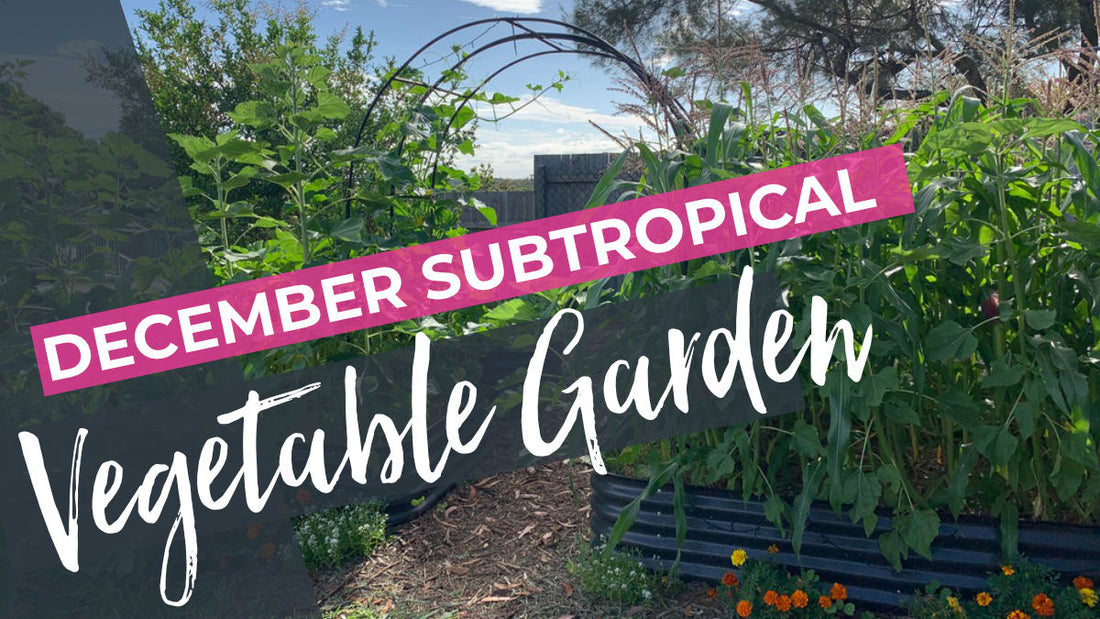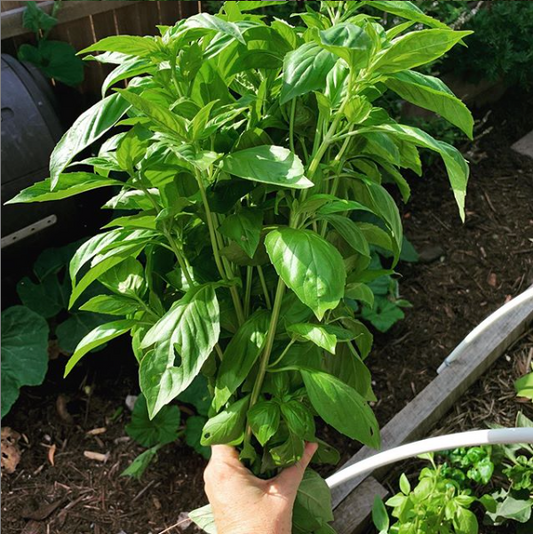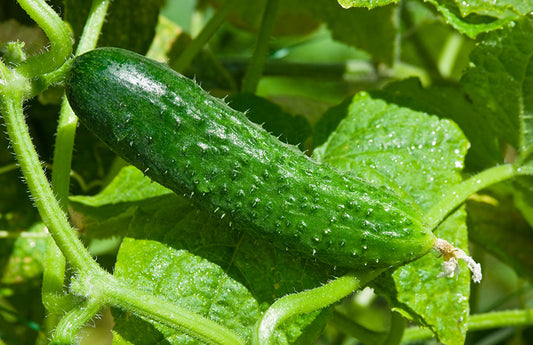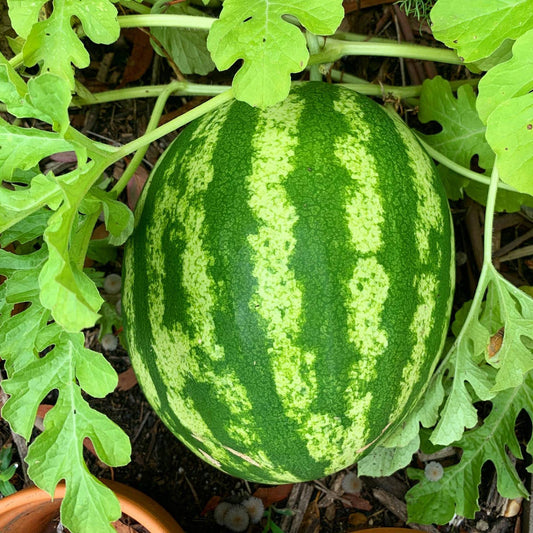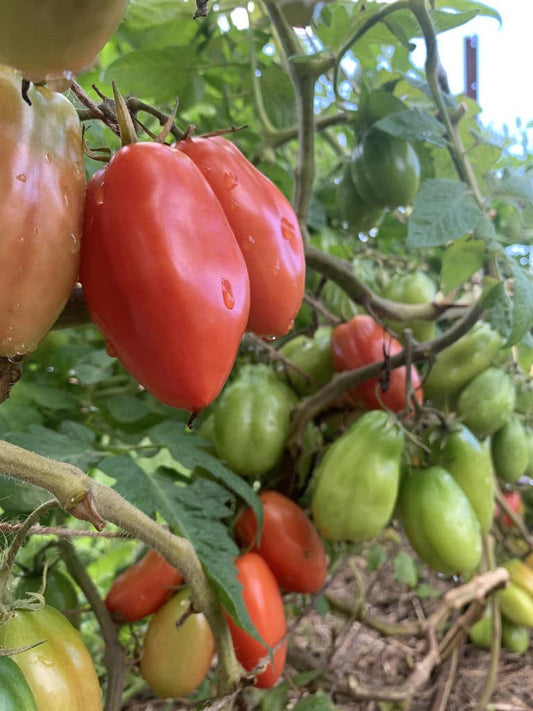December marks the start of summer in subtropical Australia, and for avid gardeners, it's a time of vibrant growth and abundant harvests. Or it’s the time to shove the sweet potatoes in and head to the beach because it all gets too hard. If you’re happy to keep growing, here's a comprehensive guide on what to do, what to plant, and how to tackle common pests and diseases this December.
What to Plant in December
Cucumbers
Start cucumber seeds directly in the garden or transplant seedlings. The heat-loving plants will reward you with crisp, refreshing cucumbers in a few weeks. We like to plant seeds every two months to keep up with supply.
Zucchini and Squash
Sow zucchini and squash seeds for a bountiful summer harvest. Choose varieties like 'Black Beauty' or 'Golden Zucchini' for their excellent flavour and productivity. If you’re prone to getting cucumber fly like we are, you may find now not an ideal time as they will be at their peak. I would avoid them unless you can net and hand pollinate. If you’re finding your fruit not setting, head out around sunset and check for the flies, they usually are at their peak around that time of day. We find if they are stung that (along with poor pollination) they tend to not fully develop.
Beans
Both bush and climbing beans can be sown this month. 'Blue Lake' and 'Red Noodle Snake' are popular choices that thrive in the subtropical climate.
Capsicum and Chilli
Spice up your garden with capsicum and chilli peppers. Plant varieties such as 'California Wonder' or 'Cayenne Chilli' for a range of flavours and heat levels. Be aware they are susceptible to fruit fly so keep an eye out for them, bagging individual fruit works well - just make sure your nets aren’t sitting on the fruit or they will give them sunscald.
Herbs
Basil and parsley can be sown or transplanted in December. These aromatic herbs not only enhance the flavour of your dishes but also attract beneficial insects to the garden. Parsley was known as the devils plant, be patient if you’re growing via seed because it takes twenty one trips to hell before it germinates (around 3 weeks!). We also grow Coriander during the summer, but for the flowers! A lot of people get frustrated with Coriander as it bolts to seed quickly but it is one of the best beneficial flowers you can grow, plus if you also let it go to seed you’ll have a never ending supply as they easily pop up everywhere.
Lettuce and Salad Greens
For a continuous supply of fresh salads, sow lettuce and salad greens regularly. Opt for heat-tolerant varieties like 'Brown Romaine' and 'Oakleaf.'
Corn
If you have the space, consider planting sweet corn. Just remember to plant in grids to aid pollination which will help with robust kernel development.
Sweet potatoes
A stock standard we grow over the hot months and don’t be afraid to eat the leaves if you’re missing your winter green hit. We plant slips (we take cuttings, pop in water and wait for roots to grow) every 30 cms for the perfect size harvest. Harvest will be around April if you plant in December (Anzac day is when we pull ours out).
See what we're planting in December here.
Garden Maintenance in December
Watering
With the rising temperatures, it's crucial to provide consistent and deep watering to your plants. Water early in the morning or late in the evening to minimise evaporation. A lot of people suggest early morning to avoid disease, but after very hot days we find that watering in the evening allows the plants to really take up the water before the heat sets in the next day and as a result they do tend to be more resilient. Just make sure you’re the soil and not the foliage if you want to avoid any fungal diseases.
Mulching
Apply a layer of organic mulch around your plants to conserve soil moisture, suppress weeds, and regulate soil temperature. Sugarcane mulch is our go to in our subtropical garden as it’s abundantly available.
Fertilising
Unless your garden is really needing it, avoid too much fertilisation over the hot months. Opt for toppings of well aged compost, worm castings or applying actively aerated compost tea or seaweed emulsion to your plants to give them a boost. We use a Seaweed saver on our garden weekly to give our garden a boost during the hot months.
Companion Planting
Take advantage of companion planting to naturally deter pests and enhance the growth of your crops. For us this doesn’t necessarily mean basil next to tomatoes, but flowers and lots of them. Our go to space filler in the veggie patch that is a haven for beneficial insects is Alyssum Sweet Alice, just keep an eye on snails as it can also be a haven for them too.
Airflow and support for Climbing Plants
Install stakes or trellises for climbing vegetables like cucumbers and beans. This helps maximise space, improves air circulation, and prevents diseases.
Pests and Diseases and other issues to watch out for in December
Aphids
These tiny, sap-sucking insects can quickly multiply in warm weather. Use a strong jet of water to dislodge them from plants or introduce beneficial insects like ladybugs and lacewings.
Whiteflies
Whiteflies can be a menace in subtropical regions. Eco oil can be effective in controlling their population. Whilst the bugs themselves may not seem like they are doing much damage, their ability to spread disease quickly around your garden is a good reason to keep them under control.
Fruit Flies
As fruits ripen, they become susceptible to fruit fly infestations. We use a holistic approach to keep them under control which you can find out more here.
Powdery Mildew
High humidity can lead to powdery mildew on leaves. Prune affected parts, improve air circulation, and apply a solution of baking soda and water to control the spread
Caterpillars
Keep an eye out for caterpillars that can damage your crops. Handpick them, net them, create a trap crop (our method) or use organic pesticides like Bacillus thuringiensis (Bt) (Nature’s Way Dipel is the common brand here in Australia) to control their population.
Blossom End Rot
Common in tomatoes, blossom end rot is a calcium deficiency disorder. Ensure consistent watering and add calcium-rich amendments to the soil to prevent this condition. Watering deeply less often will often mitigate this problem.
In conclusion, December is a bustling month in the subtropical Australian garden, filled with the promise of a rich and diverse harvest if you can withstand the problems that come along with humidity. By sowing the right seeds, tending to your garden with care, and keeping an eye on potential challenges, you'll set the stage for a season of organic abundance.
If you’re after week to week updates on what to grow and do in your subtropical organic vegetable garden come on over and join us inside Dirt Lovers.
Happy gardening!

